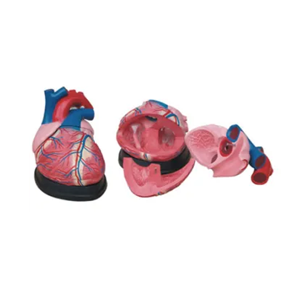24-09-2024
ADA MED SUPPLY LIMITED
Article tag: Heart anatomy model organ anatomy model
Cardiac anatomy models play a vital role in medical education and training by demonstrating the structure and function of the heart in an intuitive, three-dimensional manner to meet the diverse needs of different learners. Here are a few ways to meet diverse learning needs:
The anatomical model of the heart can clearly show the various chambers, valves, blood vessels and other structures of the heart through the fine manufacturing process. This intuitiveness allows learners to quickly build up a three-dimensional understanding of the heart structure. For beginners, the model can help them get started quickly and establish a basic knowledge framework; For advanced learners, the model can serve as a review and deepening tool to help them better understand the complex structure of the heart.

Learning styles vary from person to person. Some learners prefer visual learning while others are more hands-on. Cardiac anatomy models can meet the needs of both learning styles. Visual learners can understand and remember the heart structure by observing the model; Hands-on learners can deepen their understanding and knowledge of the heart structure by touching, disassembling and assembling the model.
And the model is not only an auxiliary tool for theoretical learning, but also a bridge that combines theory and practice. On the basis of understanding the heart structure, learners can simulate the diagnosis and treatment process of heart disease in combination with resources such as clinical cases and surgical videos. This combination of theory and practice can deepen learners' understanding and awareness of heart disease and improve their clinical thinking and problem-solving skills.
To sum up, the cardiac anatomy model can meet the diverse needs of different learners and play an important role in medical education and training due to its intuitive, adaptive and personalized characteristics.